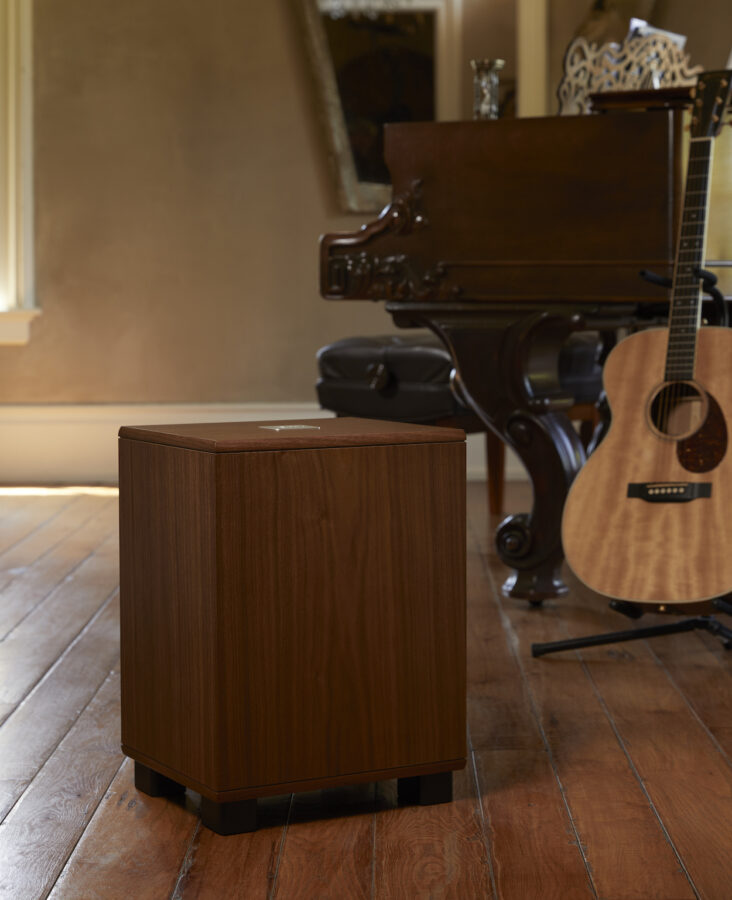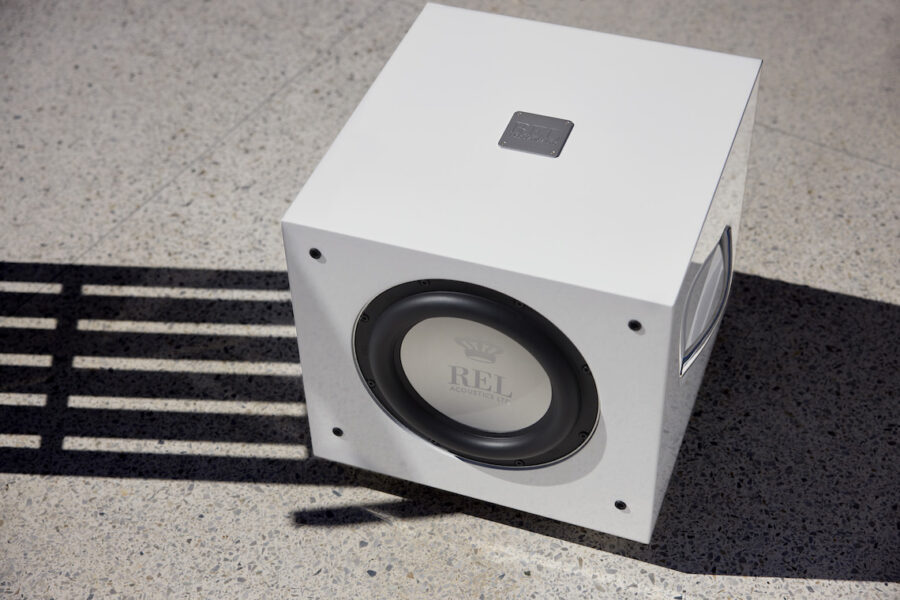Blog
Getting High
High Level Elevates Theatre to a Whole New Level

Recently, a good friend, who’s also a wildly talented industrial designer, bought one of our Classic 98 subwoofers. He loved its design cues and how it fit his space and lifestyle perfectly. I knew he and his family loved movies and streaming as much as music, which was why I recommended the Classic 98. He was happy enough with his purchase, but he wasn’t raving about its performance. When asked, he said, “Yeah, it’s good, really good.” He lives in a modestly-sized Southern California condo so the Classic 98 was more than enough to blow his space away with powerful deep bass. I knew immediately why he was only experiencing the merely “good”, and not the kind of performance that recalibrated his experience of enjoying movies or streaming.
“Please tell me you connected the high-level connection?” I asked him. Crickets. “Oh…yeah” I heard after a few heartbeats. “Oh, that’s right, you guys do the whole High-Level Connection” then, “Oh my gosh I can’t believe I forgot that.” I spent the next 5 minutes explaining what he needed to do to access as close to Full Range sound (why, oh why do the major Japanese receiver manufacturers limit almost all their receivers and processors to 40 Hz as a low-end limit?) as is possible these days.
I moved on to other calls on my way home but he called again 5 minutes later. I couldn’t answer. Then again 8 minutes into my drive, then 14 minutes into the drive. When I got home, I played back the three messages that ran something like this (the language has been cleaned up because we’re a family-friendly channel).
5-minute call: “Holy Sugar, what a fantastic upgrade. I had no idea that there was bass throughout almost every scene!!”
8-minute call: “OMG, do your customers know about this? This is ridiculous, I just put Dune 2 into our Blu-ray and there’s this weird disturbing sound during the opening credits. It’s creepy and I never heard it do this before. This is crazy.”
14-minute call: “My downstairs neighbor just knocked on my door to ask me to turn it down, but then I invited him in and we spent the last 5 minutes showing how when I unplug your High Level, all the bass in normal scenes just stops. Are you sure your customers know about this?”
If it didn’t occur to him, it may not have occurred to our gentle readers, so I thought it would be helpful to spell it out for everyone. Again. There are 3 parts to this:
- First, of course, you need to connect the High-Level cable. In the interest of brevity, please go to our website and click on “Our Pursuit” at the top, then select “How to Connect”. Or just click here. Note that you will be connecting the Red Wire to Right Channel +, the Yellow wire to Left Channel +, and the Black wire to chassis ground which, increasingly, is readily available via a knurled screw that’s clearly marked as ground. Thank you, Yamaha and NAD!
- Next, grab your receiver’s remote control because you’ll need to make a few changes. While yours may differ slightly in titles, the menu shots below will show you the correct settings to select. Click on Setup Menu first, then enter Speaker Config.
- Select Manual (NOT Audyssey or Dirac Live to enter your basic parameters correctly). What you’re trying to do is set your speakers as Low as they can safely handle, in my case, I was able to select the lowest setting that is safely possible when using a subwoofer in theatre mode, which on a Marantz is 40 Hz. Then select “Yes” for the subwoofer and make sure LFE+Mains is selected as shown. We normally select 120-200Hz for the bandwidth for the subwoofer.
- Finally, plug your High-Level Connection into the Input on your REL and adjust crossover and gain (volume) settings till they sound right for you.

RELTip™: since your receiver is rolling all frequencies below 40 Hz off (this reduces the output of everything below 40 Hz) you will need to add a bit more gain than you may normally use for 2-channel music of your primary interest is theatre and streaming content. Under no circumstances, will you turn it up past 24 clicks of gain. Similarly, you will need to increase the crossover setting somewhat to account for the 40 Hz rolloff. In our systems at REL, we often are crossing over around 13-15 clicks when using music only. With theatre, if this is your REL’s primary mission, you may find yourself crossing over at something more like 17-20 clicks of crossover.
For systems that are equally at home for music AND theatre, use whatever settings work best for music, the theatre will be slightly less dramatic but will still provide 80—90% of the improvements we deliver by using both LFE AND the High-Level Input simultaneously.
RELs are nothing short of amazing in theatre. We derive our understanding of how to approach theatre sound not from mid-fi reviewers but from work we did in transfer studios learning how film sound was made. Unlocking this potential informs everything we do for our customers. It ultimately requires the use of a -High-level-enabled REL to obtain the highest film fidelity, which I have attempted to outline the basics of above. And when film sound decides to get crazy, we offer our HT range that delivers wickedly fast and fantastically dynamic special effects unlike any of our competitors. These reasonably -priced models are tasked ONLY with delivering the Snap! Bang! and explosive Boom! of big theatre effects. Combine the two and you have a theatre experience that marries the best of both worlds into a state-of-the-art theatre. And it all starts with our High-Level Connection!
Thank you for reading our latest blog. We strive to provide content that’s both entertaining and educational.
If you have questions or suggestions for future articles, reach out to us at contactus@rel.net. We value your input and will do our best to respond within a few days.
With over 160 years of combined experience, we’re committed to making your audio experience exceptional. If you found value in this piece, please share it with friends who might benefit.











